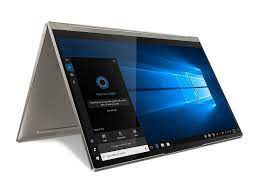AMD & Intel Servers- Dominating the Server Market leastwise till 2023

Introduction:
Over the last 2 years or so, the world has not gotten over the effects of the COVID-19 pandemic. The impacts are not only present in the personal but also professional lives as well. It is because of this fact that businesses throughout the world had to adapt to better technologies and solutions if they want to ensure their survival. Mass production is one of the major concerns that global businesses are looking to address in today’s day and age.
Revisiting History
The name computer processor is synonymous with the Intel brand, particularly this is what people perceive. As far as the enterprise microprocessor industry is concerned, they are acknowledged as the pioneers. Intel has dominated more or less half a century. Computer processing advancements took place during the 20th century, and Intel Corporation was the sole winner in that regard. However, the scenario for the microprocessor market changed all of a sudden with the arrival of AMD (Advanced Micro Devices) came to the limelight in the mid-1970s. It proved to be a catalyst for OEMs and consumers alike and who would have thought that would begin an intense rivalry between the two brands.
AMD in the 80s and 90s
During the era 1980 to 1990, Advanced Micro Devices (AMD) was cloning processors of Intel and got success. However, they launched the first in-house designed x86 processor in the year 1996. Intel Pentium processors were the competitors that were operating at 75-133 MHZ. However, it was nothing extraordinary or something that could change the world entirely. They were innovative and created an inexpensive substitute for Intel. For those who were unable to a Pentium-based PC, AMD was just the ideal alternative in that regard.
2000-2010 – AMD Got Innovative
It was in the early 2000s when socketed Athlon processors were released by AMD. By focusing on the features such as double data rate RAM and on-die L2 cache, they changed the game altogether. The 64-bit processor was first released by AMD in the year 2003, and this is the time they competed for head to head with Intel. Hence, in a short time, they not only dethroned Intel but also took the crown of innovation from them as well. Opteron was the first server-class processor that AMD introduced in the year 2007. By introducing it in the market, AMD once again entered into competition with Intel, this time targeting the XEON processor.
Where Intel Went Wrong?
AMD took advantage of the several architectural blunders by Intel, particularly during the time Opteron was launched. It was in 2017 March when the Ryzen microprocessor was introduced successfully by AMD. One of the things that led to its success is that it could break records of overclocking.
Unheard Stories from 2010-2015 – The Dark ages
AMD at this time had overshadowed Intel with the introduction of the most logical metrics. Even though not much development or innovation took place during that time, core-processing aspects were introduced. However, this is what cost them by a long shot and it remained for a decade. The products they introduced were not intended for competition.
Report regarding AMD and Intel
As per the Trendforce market researchers’ report, AMD’s Milan CPUs and Intel’s Ice Lake were widely adopted in the third quarter of 2021. According to another report, Whitley, the latest server platform from Intel is currently pacing fast. Thus it is expected that the 30% market share can be overtaken by team Intel followed by AMD who may end up getting half of the share, by 2022. This year, ‘Cascade Lake’ the 2nd Generation processor known for its scalable approach were shipped in the vast majority.
Even though companies like Marvell, Amazon, and Ampere have strived hard for Arm-based system-on-chips (SoCs) servers, however, as per the claims of TrendForce the demand is relatively small, hence, the market share remains at 3%. According to TrendForce, as compared to prior generations, Ice Lake has adapted to a “step-up in computing performance”, because of support and a highly scalable approach.
Even though AMD has tried hard to dominate the industry, however, they have failed to overcome the market leader Intel. Moreover, the share Intel has is expected to surpass 30% of the entire market of servers, once the year ends. However, as far as x86 processors and server CPUs are concerned, it seems to be the rate of symbolic exchange.
Built-to-order and customized arm-based servers will undergo competition against machines and x86 technologies until the minimum time of 2023. On the other hand, Intel and AMD will dominate the money-spinning market. Even though both are equal in their dominion, therefore the chances for competition cannot be undermined.
Increasing Need
According to Trendforce, AMD has gone a long way from offering 7nm+ nodes and 7nm processors. Hence, it seems that the transition for them is reaping the reward. The customers have slowly acknowledged the new products offered by them. Yet, as far as RISC- and ARM-based processors are concerned, AMD has a long way to go. As per the prediction of Trendforce, ARM CPUs may not compete with x86 CPUs for a year and a half in the server market.
The growing need for a larger capacity of cloud storage is inevitable, particularly with Big Data and AI are on the verge of arrival. The core count of CPU is also rising while the data centers are frequent; hence, the manufacturers are confused about how to make use of memory optimization to raise the performance of computing. However, to solve this problem, Trendforce suggests that Eagle Stream can resolve the issue.
Conclusion
AMD and Intel have gone head-to-head in the industry for decades and it seems like the war is just heating up for the better. Even though Intel has the upper hand in getting the market share, leaving the remaining to AMD, however, history has a lot to say, as far as fierce competition is concerned. There is no denying the fact that AMD since its arrival has snatched the bragging rights from Intel, particularly in the early ages when it was the sole industry leader.




